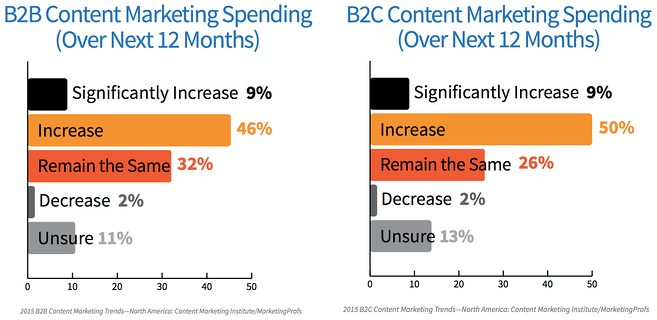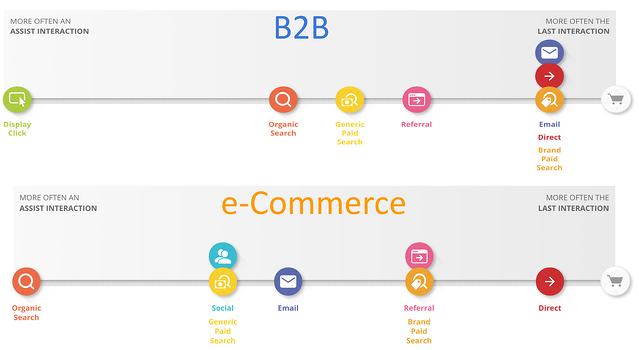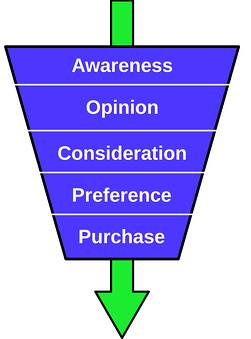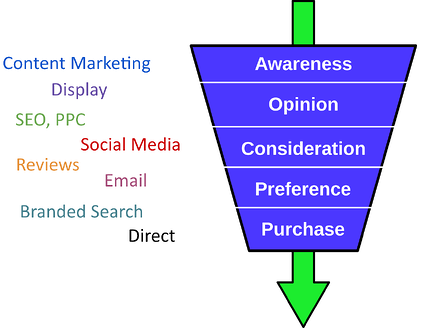If you’re like most business owners and marketing managers, you wonder if you’re using the right marketing strategies and tactics. With marketing expenses representing around 8% of total revenue, investing in the wrong strategies is a costly mistake.
This leads many to ask, “what is MY digital marketing formula?”
One answer is to copy everyone else.
So, what is everyone else doing?
A recent report by Forrester Research shows over 80% of digital ad spend going towards search and display advertising, 15% towards social media, and only 3% towards email (which is still considered the higher ROI digital channel).
Another report from the Content Marketing Institute shows over half of both B2Bs and B2Cs increasing their content marketing spend in 2016.

The one glaring flaw with using these reports is that they’re based on what other businesses are doing, not what your customers are doing.
Your formula is derived by how your customers behave. When we refer to behavior, we’re referring to your customer’s journey.
The customer journey tells the story of the customer’s buying experience: from discovering their pain, to researching solutions, entering the sales process, and eventually into a relationship with your business.
There are four components that make up the journey: persona, properties, path, purpose.
Personas
Persona marketing begins with detailing, in a very specific way, who you are marketing to. You start by creating a fictional character based on common traits, then target your marketing accordingly.
Persona traits include a combination of demographic information, motivations for buying, and typical day-to-day behavior. A well-detailed persona should take up a full sheet of paper. It not only lists their characteristics, but tells a story about who they are and why behave the way they do.

This characterization of your customers focuses your marketing efforts. Instead of trying to market to the masses, you focus on a few distinct individuals. Because these individuals represent a much larger population, what speaks to them will speak to your entire market base.
Properties
70% of the buying process happens anonymously, and it takes place on a combination of different web properties.
Properties are all the places a customer can research and discover your brand, product, or industry online. This could include your website, a mobile app, social media page, youtube, or customer review site.
Businesses need to know where their customers go to get informed, to obtain information, and to find solutions.
Path
The path details the sequence, or the order, people interact with you leading up to a purchase.
Studies show users visit your website several times via multiple marketing channels (SEO, PPC, email, social) before engaging with you.
Channels which first introduce a user to your website are typically non-branded PPC, SEO, and display advertising. Social media and email marketing bring first time visitors back to the website a second or third time. Branded search (searching your brand name in Google) or going directly to your website are used just before making a purchase.

Knowing which channels are used at the beginning or end of the customer journey could influence how you value and prioritize them in your marketing.
Purpose
Finally, determine the purpose of each property in the customer journey, as it relates to the buying funnel.
The buying funnel represents the sequence of steps a buyer takes before making a purchase. It begins with becoming aware of their problem, then a consideration of available options, developing a preference, and ultimately through to purchase.

Does the property help the customer during their opinion and consideration phase? Does it convince them that you are the best choice in the market during their preference and purchase phase?
Different messaging works better depending on where someone is in the funnel. Promotional messaging is ineffective early in the customer journey, but becomes more effective the closer someone is to purchasing.

Every property and channel in the consumer path has a purpose that fits in this buying funnel. When those properties successfully deliver on that purpose, you sell more.
Discover Your Own Customer Journey
The easiest way to better understand your customers begins with one simple step: talk to them.
Get the names of five to ten people who recently purchased from you, then ask the following questions:
- When did you first realize you had a need?
- What was the first thing you thought of?
- What was the first thing you did?
- What sites did you visit?
- What did you search?
- When did you first find us?
- How long before you contacted us?
- What else did you see that was influential?
The more you ask, the more their journey will come into focus. Trends and similarities will begin to emerge, and your primary personas will be revealed.
Next, develop your persona pain statements. These are the thoughts or statements they have when the buying process first begins. A pain statement speaks to their problem, not the solution.
An HR manager’s pain statement could be, “we have trouble retaining good people,” or “I’m having trouble increasing employee sentiment.” It’s these statements or thoughts which cause them to take action.
After developing your persona’s pain statements, simulate their research phase. Identify which channels they use to begin researching their problem. An HR manager may go to Google and search for articles on improving employee sentiment and incentivizing employees to stay. If you market to HR managers, this is your opportunity to intercept them with relevant, valuable content.
Final thoughts
Stop focusing on the bottom of the funnel. Email acquisition and social follows are more valuable than you’re treating them. Start thinking about nurturing through these channels instead of selling through them.
Your formula is ultimately derived from how your customers behave. Get to know your customers and their behavior as much as possible, and the formula needed will reveal itself.





Agree, disagree, or just have something to add?
Leave a comment below.